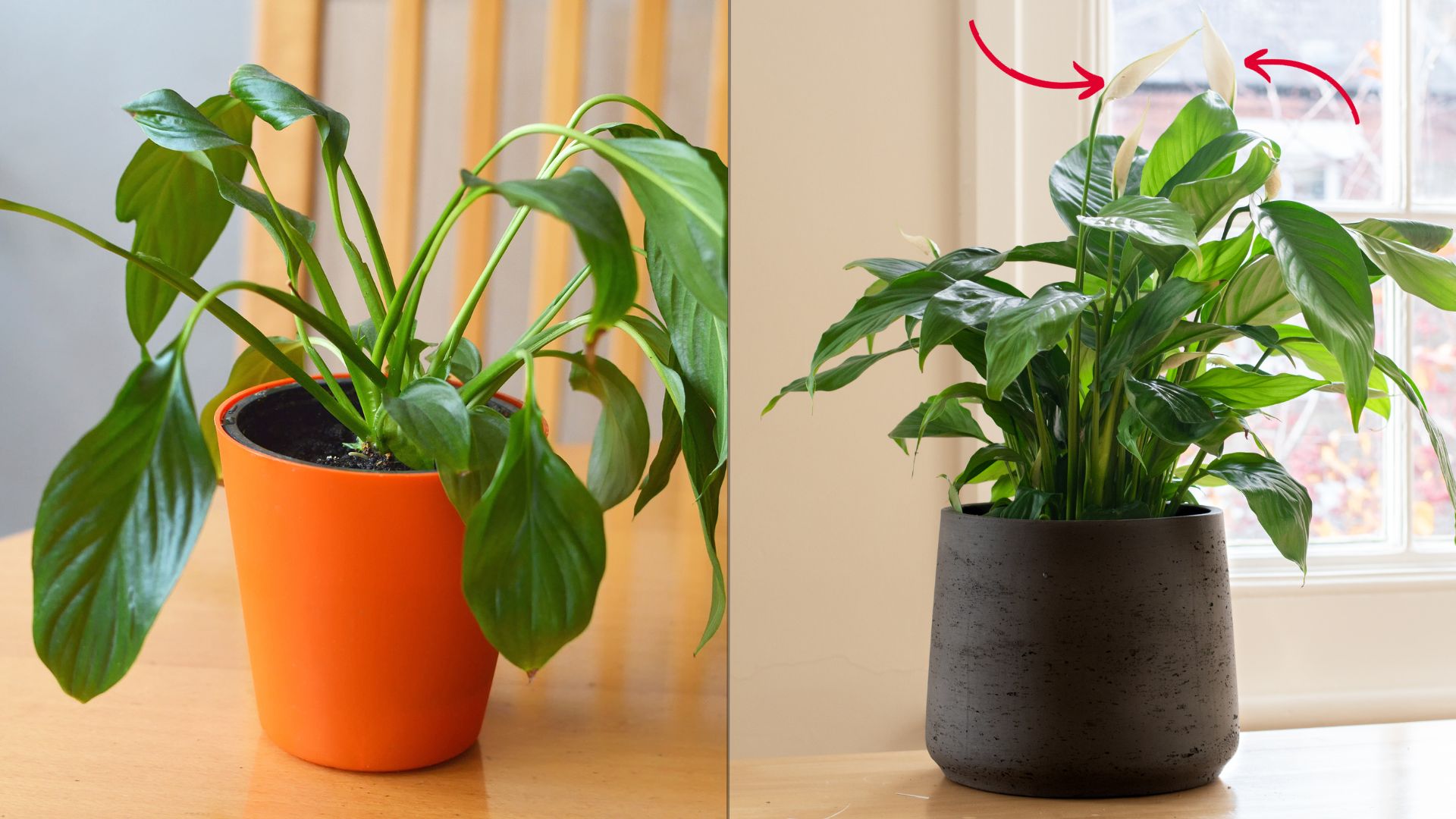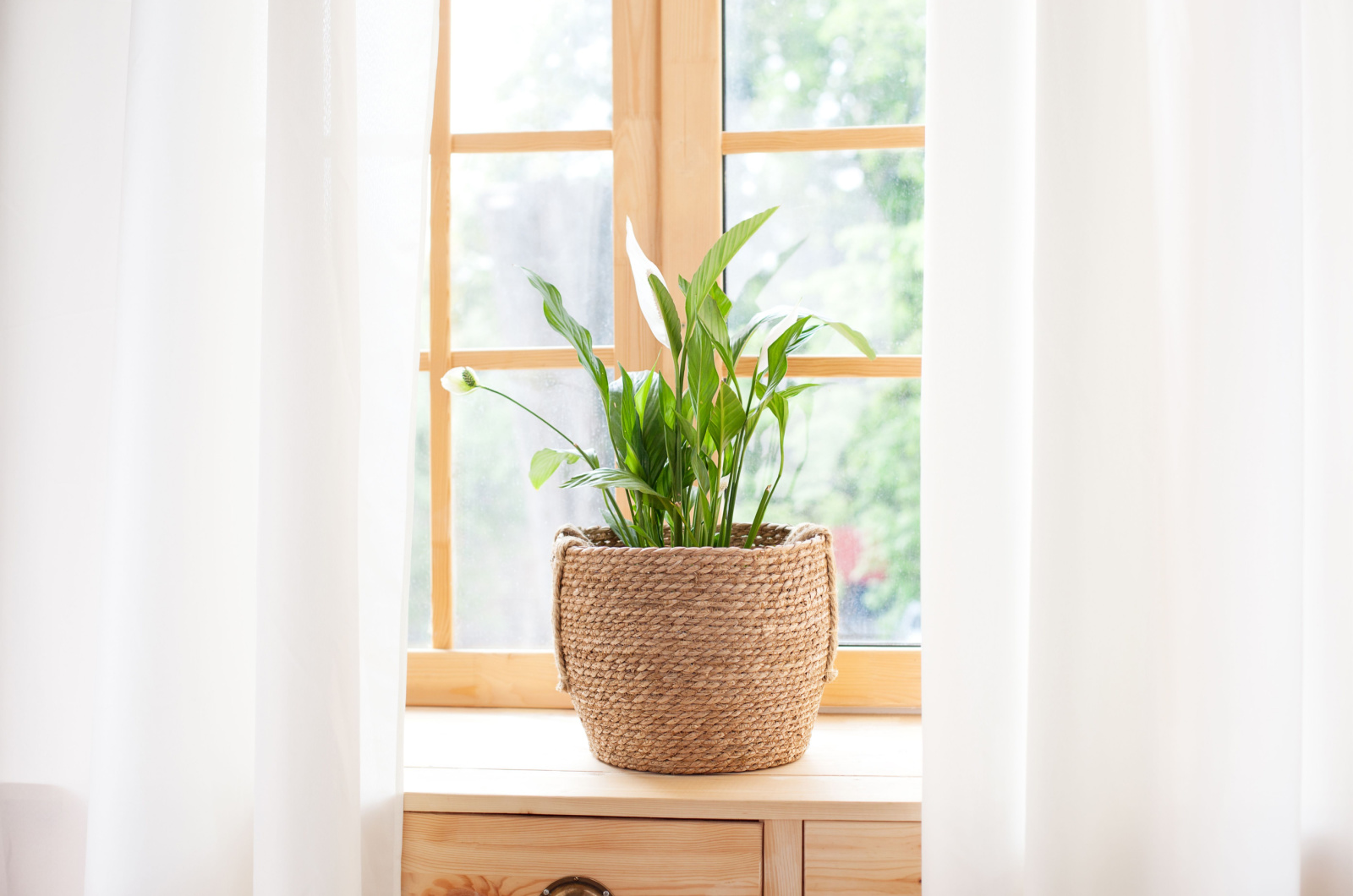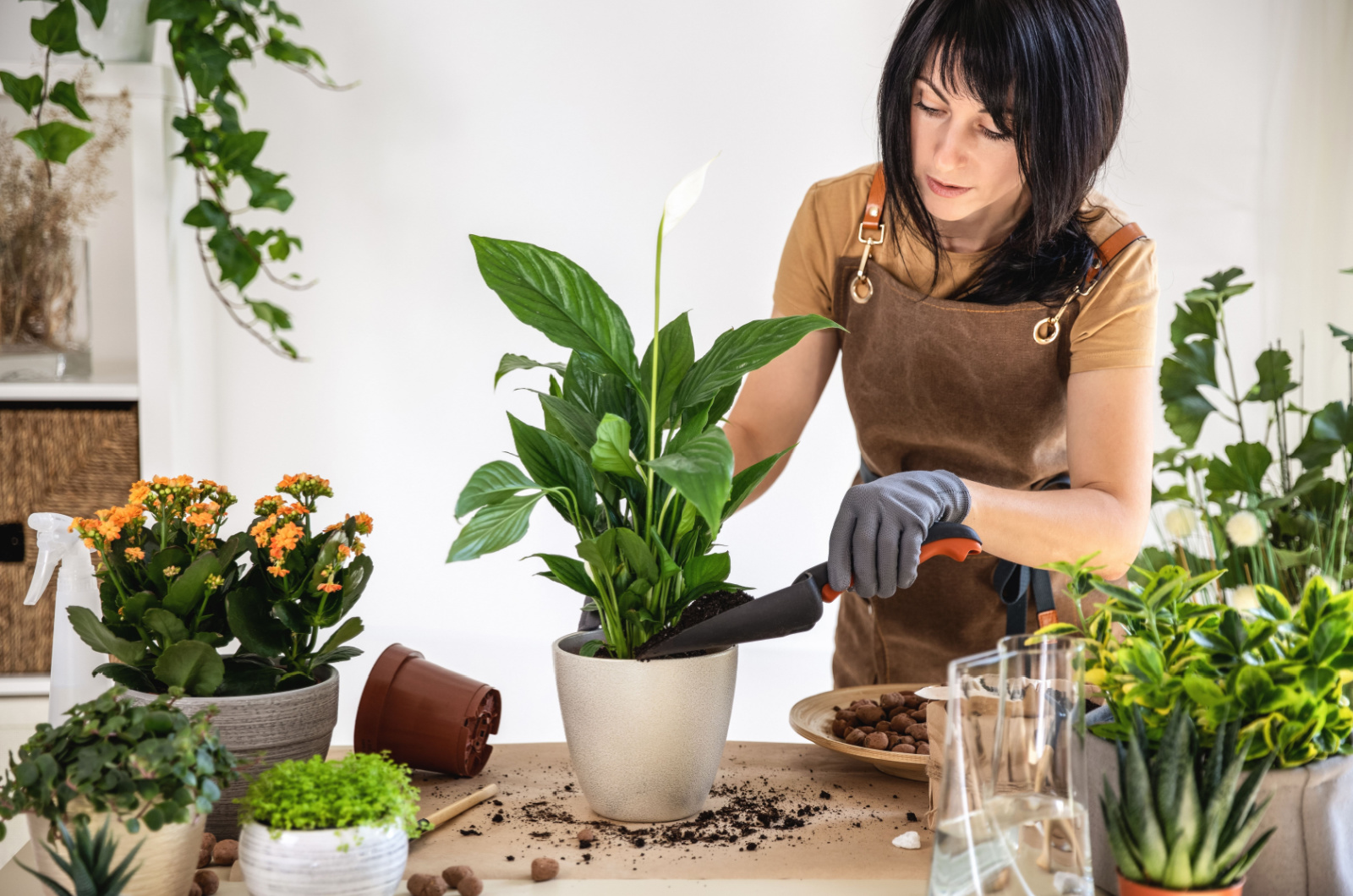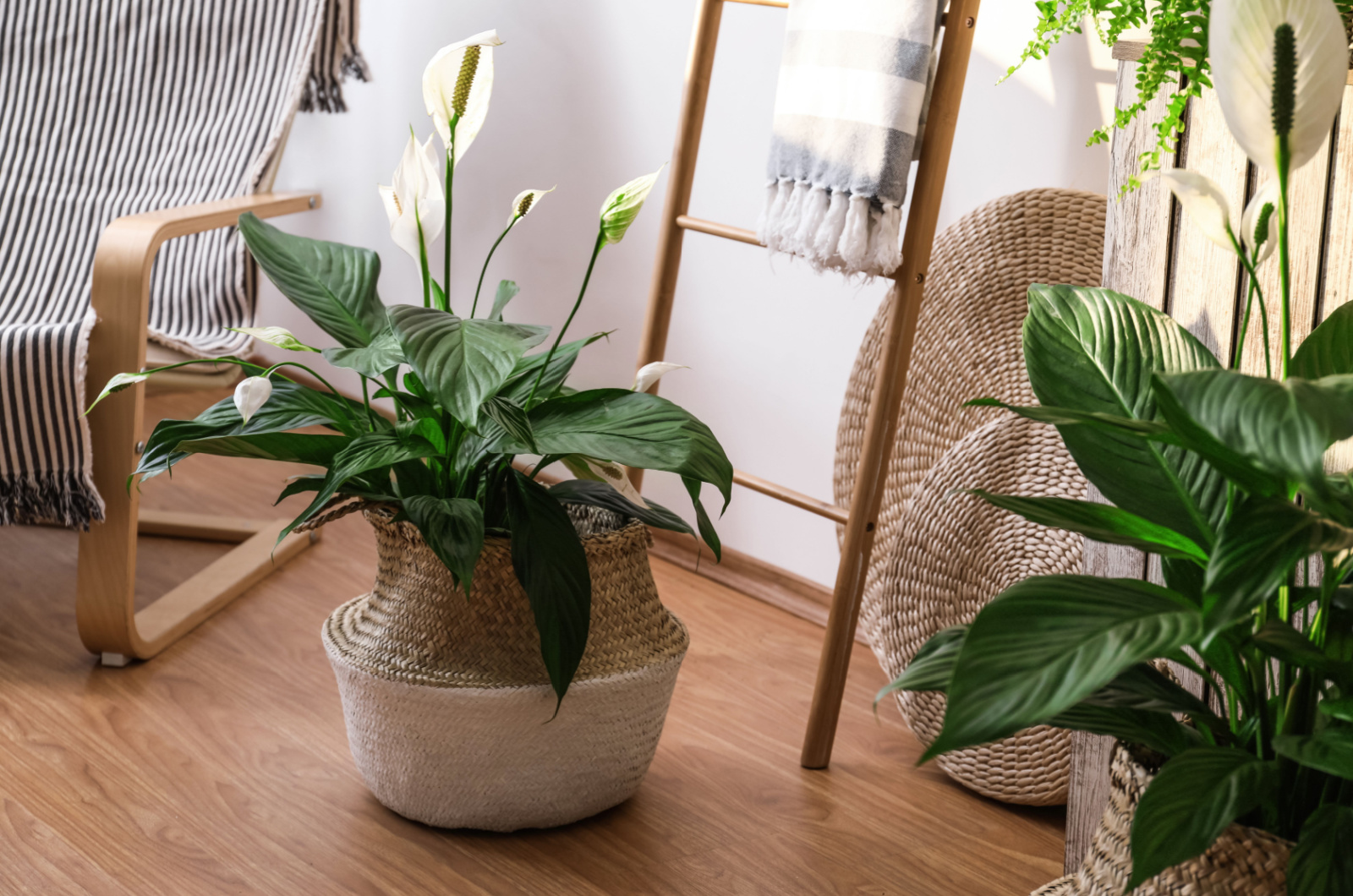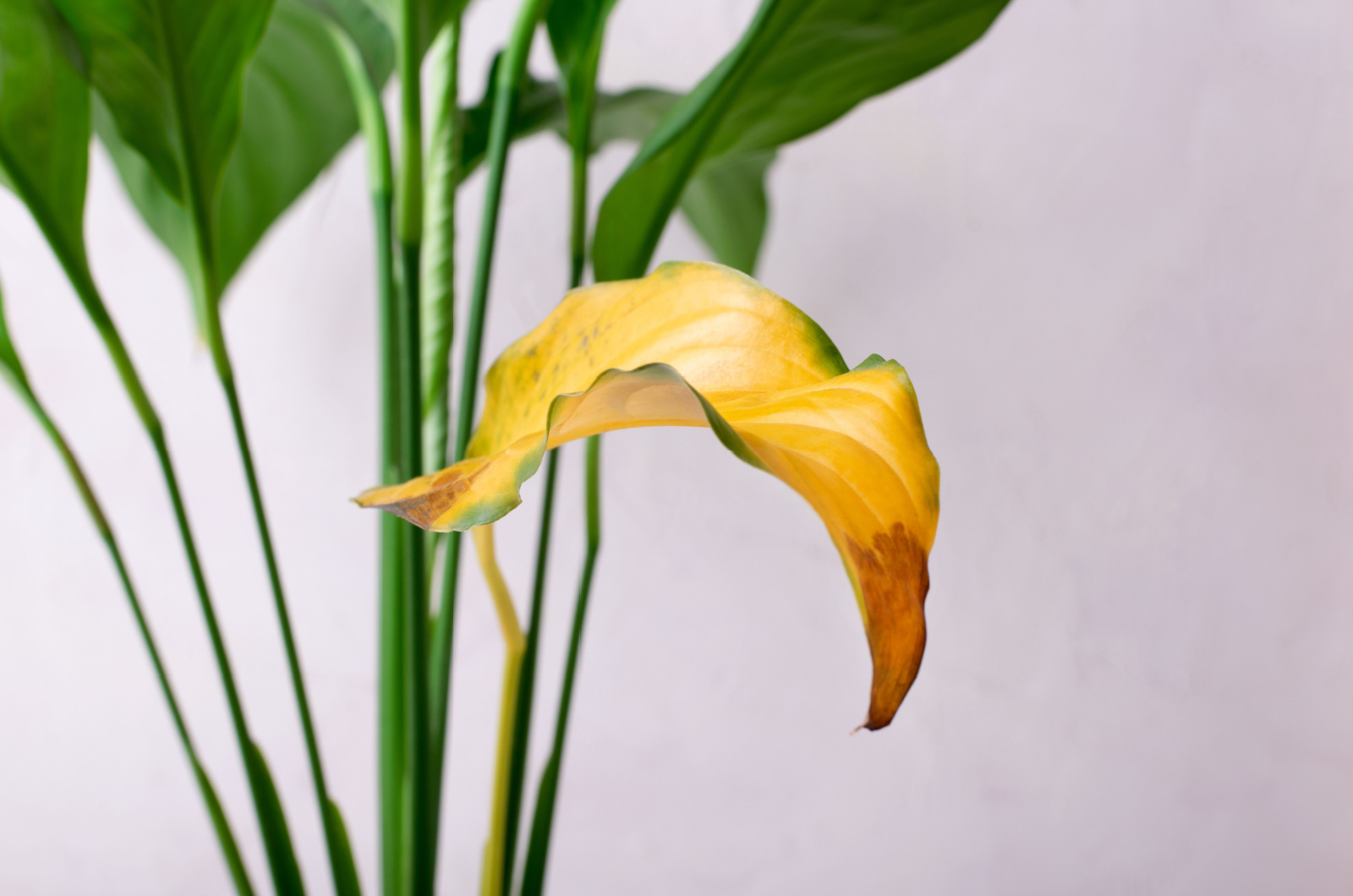Peace lily not blooming?
Don’t fret, we are here to fix your issue!
Improper lighting, watering your Peace lily either too little or too much, inadequate fertilization, and pest infestation are just some of the reasons your plant might not bloom.
Keep reading to discover some simple tips to encourage those beautiful white flowers. Let’s make your plant thrive and bloom!
Correct Light Settings
Peace lilies are a type of plant that can adapt to low light conditions, so keeping them in too bright locations might lead to wilting and yellowing of the leaves.
These lovely plants generally do well in bright, indirect light. Avoid putting them in direct sunlight as it can burn their delicate leaves.
It’s best to keep your Peace lily in an east-facing window with sheer curtains. Or, put it several feet away from a south-facing window where it will receive diffused sunlight.
If you can’t find the perfect location, Peace lilies will do well in artificial lighting as well – use LED or fluorescent bulbs and place them no more than 12 inches away from the plant.
Related: Why Is My Peace Lily Drooping? Find Out Causes And Solutions
Adjust Watering
Watering Peace lilies can sometimes be tricky. They don’t like too much water as they are susceptible to root rot; on the other hand, they don’t like to be kept bone-dry for too long.
Water these beauties more frequently during their growing season – at least once a week. In the winter, you should reduce watering to every other week. Use lukewarm water when watering them and make sure that the soil is not soggy.
It’s best to check the soil before the watering session – if it is dry, go ahead and water your Peace lily. If not, postpone watering for a couple of days.
Water your peace lily in a sink or other container to allow any excess water to run off easily. Maintain the healthy and vibrant appearance of the leaves by spraying the plant once or twice a week with room temperature water.
This might be useful: 10 Symptoms And Solutions For An Overwatered Peace Lily
Provide Proper Soil
Inadequate soil can make your Peace lily uncomfortable, which deprives you of those beautiful, white flowers!
So, in order to encourage your lovely plant to bloom and thrive, make sure to provide it with a peat-based potting mix that is also lightweight and well-draining. You can add vermiculite or perlite for extra drainage.
The pH levels of the soil should be between 5.5 to 6.5, so slightly acidic soil is perfect for your Peace lily!
You can use a potting mix made specifically for tropical plants or houseplants as it will provide your lovely plant with all the nutrients it needs to produce those wonderful blooms!
In case you are using an all-purpose potting soil, be sure to add some fertilizer every few weeks so that your plant gets enough nutrients.
Additionally, you can add mulch on top of the soil to help retain moisture – use shredded bark or composted leaves.
Use The Right Fertilizer
Providing your Peace lily with all the right nutrients it needs for bloom production is very important.
It’s best to use a balanced, slow-release fertilizer with an equal NPK formula. Therefore, you should opt for a 8-8-8 or 10-10-10 fertilizer for your Peace lily. Use a mild fertilizer because these plants are known to have sensitive roots. Avoid those with high salts or urea content.
Make sure to fertilize only during the growing season because they go dormant during the winter months, so they don’t need many nutrients.
Apply half the suggested strength of fertilizer to the potting soil when adding fertilizer to your Peace lily, and then water the soil well. This will help to avoid burning or overfeeding the plant.
You should also occasionally run water through the soil and let it drain completely in order to get rid of any excess soil. By doing this, you can guarantee that your plant will stay happy and healthy throughout the year!
Related: Peace Lily Leaves Turning Black: Reasons & Solutions
The Container Material Matters Too
The size and the container material also play an important role when growing Peace lilies. For starters, you should get a container that is slightly larger than the current size of your plant.
Opt for plastic, ceramic, or terracotta pots that will provide adequate drainage and proper aeration. Don’t forget to buy a pot with drainage holes in the bottom!
Select a container with enough depth and width so that the plant’s roots can develop comfortably. You can also use containers with saucers to make it look more aesthetic and also manage water spill.
Maybe You Need To Repot
Stunted growth, no blooms, and overall drooping might be signs that your Peace lily needs repotting.
First, choose a pot that is slightly larger than the current one because the roots need more space to grow and spread. High quality potting soil and pots with drainage holes are a necessity when repotting.
Once repotted, put your Peace lily in bright, indirect light and water thoroughly. You should get rid of any dead or damaged leaves and stems, but also check the roots for root rot. If you spot any rotting roots, trim them away and remove the soil completely.
Related: 5 Easy Steps For Repotting A Peace Lily
Be Aware Of Pests
Although the Peace lily is a sturdy plant that is relatively resistant to pests and diseases, there can still be some pesky insects that sneak in and attack your plant. Those pests are mealybugs, spider mites, thrips, scales, and aphids.
Leaf discoloration and wilting are often signs of pest infestation. You might even spot some crawling all over the plant, leaving webbing or sticky residue behind.
Diseases like powdery mildew, bacterial leaf spot, and root rot can also affect your Peace lily. White spots, wilting, and yellowing of the leaves usually occur due to these plant diseases.
Proper plant care and occasionally cleaning the leaves with a damp cloth can help prevent pests and diseases. In case of an infection, treat your plants with neem oil, pesticides, or insecticides.
This might be useful: Watch Out For These 15 Common Garden Pests!

